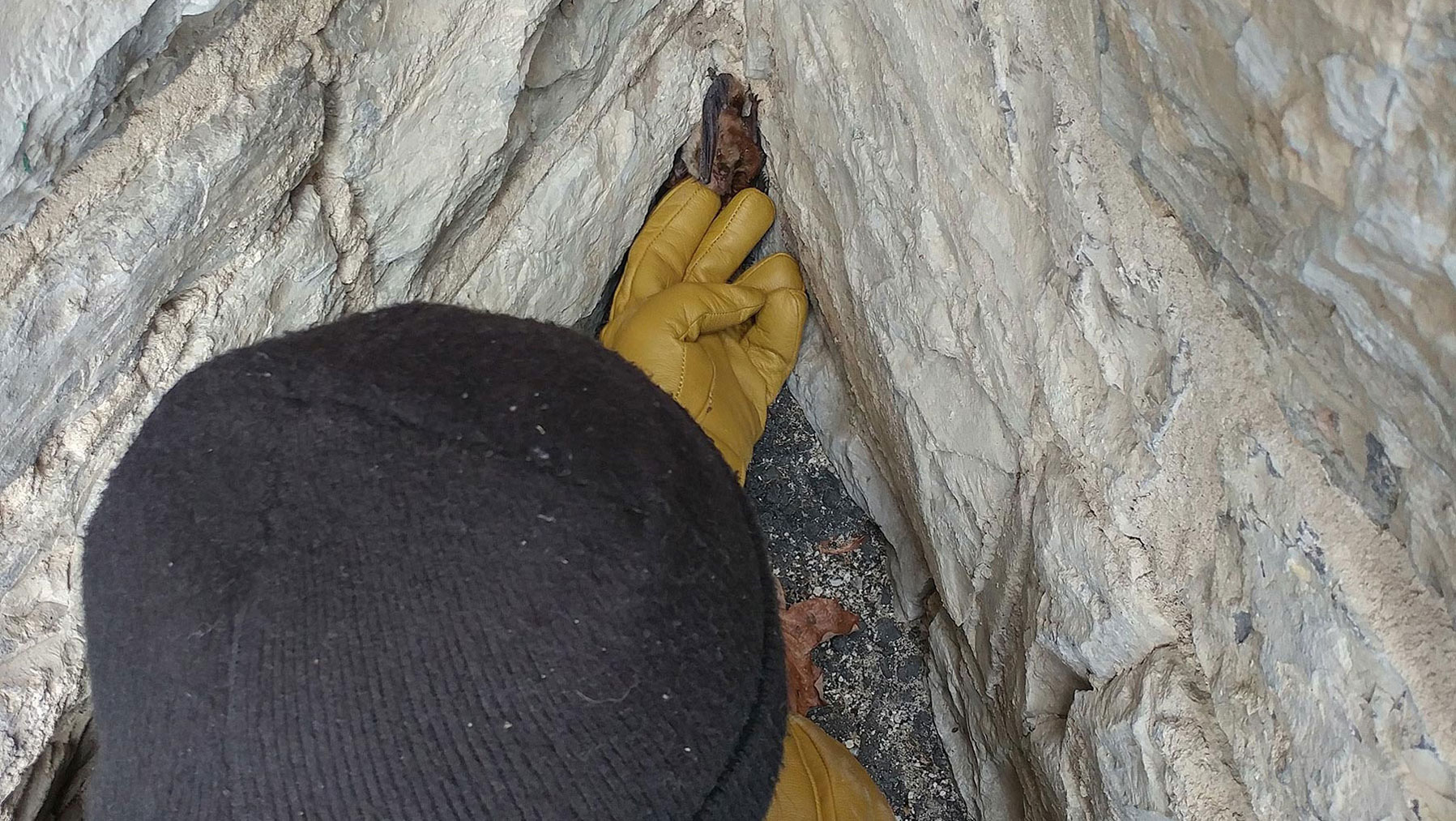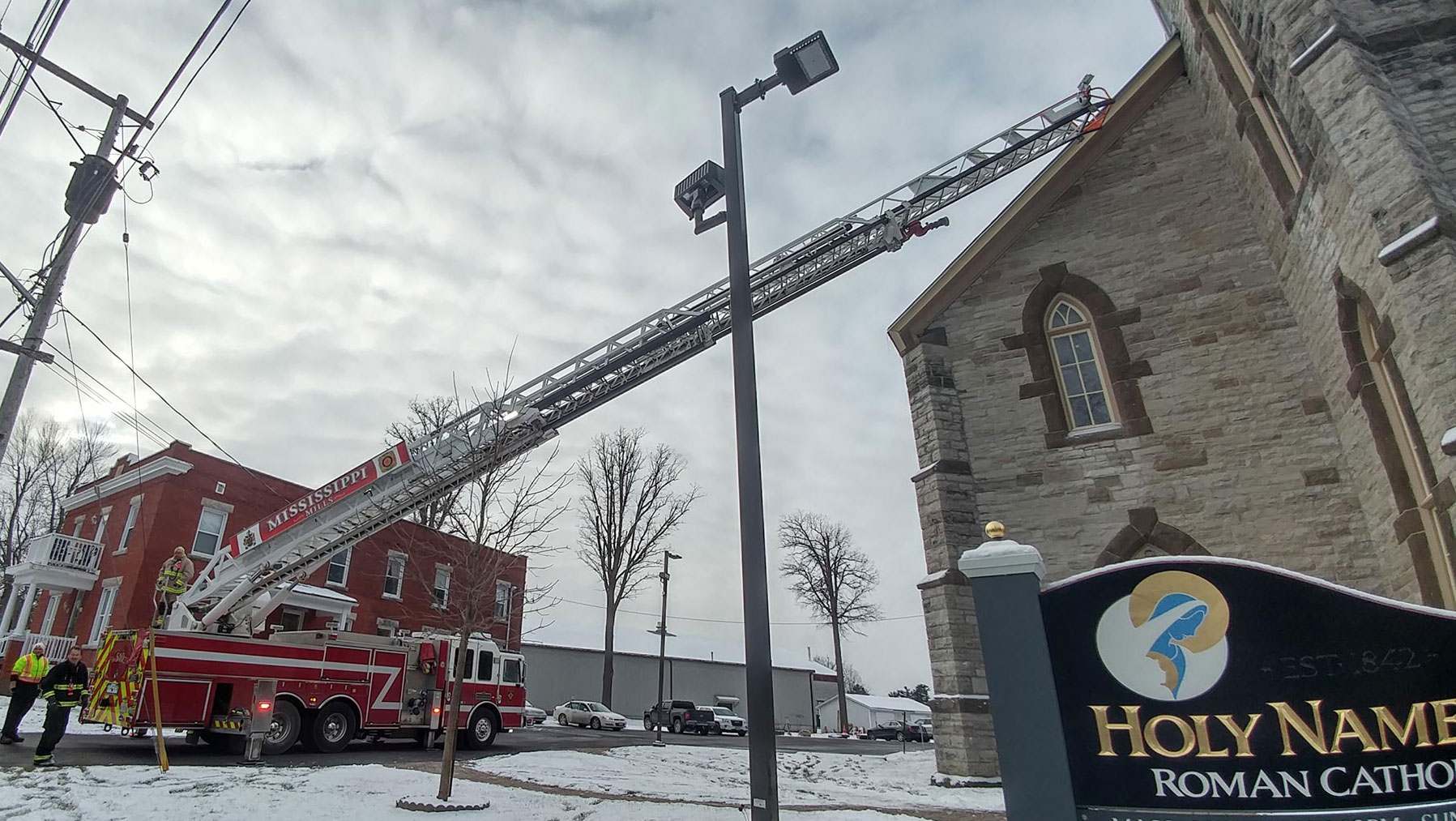In December 2017, several parishioners of a heritage church in Almonte, Ontario noticed that a colony of Big Brown Bats had returned to the church after being evicted in the fall and were simply hanging on the wall of the church, unable to get into their traditional wintering roost. This was unusual; typically bats find an alternate roost after being evicted. The parishioners were worried about the fate of the bats and called a local naturalist with the Mississippi Valley Field Naturalists group in the community to inquire what could be done. The naturalist alerted conservation biologists with the Canadian Wildlife Federation, who focus on bat conservation.
The nights were cold, around -5°C (hibernating sites are usually no colder than 2°C), which meant the bats were using up important fat reserves just to survive each night. We deliberated on whether to intervene, and decided to wait several days to see if the bats could find their own way to an alternative roosting site. When they hadn’t moved by late in the week, we decided to go to the church to assess the bats.

Once Conservation Biologist Mike Anissimoff and I arrived to look at the bats, it was evident that the bats were not likely to fly to a wintering location. They were clinging to the stone exterior wall of the church, some alone, and some in clusters. It seemed very unlikely that they would fly anywhere else, and with the cold temperatures that were due to arrive by Sunday evening, we knew that if we didn’t move them to a shelter for the winter, they would slowly freeze to death.
After giving Linda Laurus, Executive Director of the Rideau Valley Wildlife Sanctuary, a heads up that the bats would be delivered to the sanctuary, the team worked carefully, pulling each bat from the wall and placing it in a cardboard box. We found some nestled in a tight corner of the building, some under the garden hose, and others on the ground.
Some of the bats hissed and opened their tiny mouths to expose their tiny teeth, but none of them tried to bite or fly away.

We collected all that we could reach with our 12-foot ladder. Twenty-six in all, but there were several clusters of bats beyond reach, up to 12 metres high, on either side of the belfry. It was time to seek help from the community. Who do you call when you need a very long ladder? The fire department, of course. Pascal Meunier, Fire Chief of the Mississippi Mills Fire Department, agreed to help, and organized a crew and fire truck to meet Anissimoff on Sunday afternoon. The crew were very professional. They didn’t once back away from this challenge, and before long all of the remaining bats were collected.
All 46 bats are now in the care of the Rideau Valley Wildlife Sanctuary. Linda Laurus and Genevieve Quesnel weighed, rehydrated, fed, and assessed the health of each individual bat. They also ordered the 156,000 mealworms that it will take to bring these bats up to hibernation weight. Once they were ready for hibernation, the bats were placed in a ‘bat fridge’, which will keep the bats at the perfect temperature for the winter. In the spring, the bats will be returned to Mississippi Mills to find a new roosting site.
It took a community of people to work together to rescue these bats. Canadian Wildlife Federation would also like to thank the Ottawa River Power Corporation, Environment and Climate Change Canada, and Get ‘em Out Wildlife Control for advice and offers of assistance.



